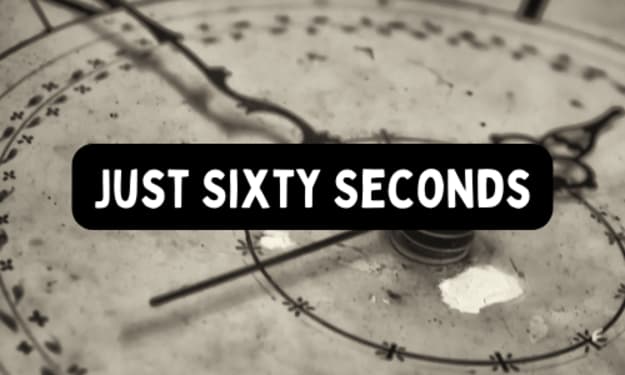Embracing Abnormality
A Social and Psychological Look at the World

The definition of what is abnormal varies from person to person. Personally, an abnormality is anything that varies from my personal bubble of normal. Anything that varies from my day-to-day, I’d consider abnormal. If a woman wearing nothing but black clothing were to walk into my uniformed school, that’d be abnormal to me. If we had an exchange student arrive, that'd also be abnormal. They’re different from what is normally seen around my little bubble. So I decided to delve into my perceptions of abnormalities and see how they differ from the psychological term of abnormal and my own thoughts of what is abnormal. In order to preserve the identities I shall call those who I observed my "subjects".
Subject A was a little girl, perhaps about seven or nine. She had these pretty brown curls of hair and big brown eyes. She was sitting for tutoring and I would have thought nothing of it. It was only when I saw her signing to the man who assisted her with her work that I realized she was deaf. To me, that’d be an abnormality. She’s different from me because of the fact that she is deaf. Taking ASL myself, I decided to speak to her. I asked her about whether she was born deaf or grew to be deaf. She explained to me that she was born deaf. We spoke briefly about her family life and she told me that she wouldn’t want to hear anyway. I asked her why and she smiled and said: “My baby brother cries too much.”
Subject B is a boy. I assume he’d be 15. While most of the kids in my school just carelessly walk around, he uses a powered wheelchair. From my standpoint, seeing someone wheeling around is quite different than all of those who I see walking every day. I’ve never personally spoken to him but he seems like anyone else, aside from the fact that he cannot walk. He seems like a sweet kid.
Lastly, Subject C is in my own family. An adult male who goes around to help people with odd jobs around their house. A very tall, very lanky man with a salt and pepper colored beard. But every time you speak to him he returns to you with slurred speech accompanied by stuttering. Starting in his teenage years, he’d abuse drugs. Even going to far to risk his life over them. In a drug deal gone wrong, my uncle was jumped in an alleyway and viciously attacked. I don’t know all the gory details about the medical stuff but the doctor himself was very surprised that he even survived the incident. From then on he dropped the drugs and turned to a new stimulant: alcohol. Binge drinking. It’s gotten so bad that when he’s trying to work on fixing something, he can’t function unless he has alcohol by his side. His one companion. He shakes or fumbles and can’t seem to focus. What’s even worse is that people almost encourage his habits. When they ask for his help, they offer him both cash and alcohol. His tendency to drink excessively as well as his withdrawal symptoms when he is not drinking are very abnormal to me. But more so people feeding into his addiction, rather than trying to provide him with help, is far more abnormal.
After reading a few textbooks as well as books based on psychology, I've learned the model to determining whether something is abnormal is determined by a few factors. Often labeled the “four D’s”, the way we can determine abnormality is by gauging levels of dysfunction, distress, deviance, and dangerousness. When you display dysfunction it typically means your feelings/thoughts/behaviors are an interference with your daily life. Distress is when behaviors/feelings cause distress to themselves or those around them. Deviance can be influenced by cultural norms but can be a delusion or hallucination (whether auditory or visually) among other things. Dangerousness is described by excessively aggressive thoughts/actions. For the first two subjects, none of these are really applicable to them. There may be some stigmas or even prejudice against them but they are not the book’s definition of abnormal. Subject C, though, does display some of these. His epic withdrawal symptoms definitely affect his ability to function; throwing his motor skills off as well as his speech. He also tends to get very upset when criticized and has attempted to fight members of the family, ending in the shoving of a relative so hard that they fell and dented a car. This displays both dysfunction and possible dangerousness. Checking the DSM as well, he seems to suffer from substance abuse. But that is obvious, is it not? So by using the four D’s we can say that he is possibly abnormal in the eyes of psychology. There are also many different theories and perspectives on why abnormalities happen; from biological reasonings to psychological reasons, even supernatural reasons!
To conclude this, it is easy to say someone is abnormal just because they seem to deviate from what you see every day. And it is easier to stigmatize someone or to have preconceptions of them just at a glance. Psychology, though, has a different definition of abnormal. We should not simply use cultural norms or the flimsy reasoning of a teenager playing psychologist to judge someone. To see them as abnormal or mentally ill. We should instead try to break down their actions and actually think before we so carelessly throw accusations and judgment. We are all different from one another, and we are all abnormal in our own ways.






Comments
There are no comments for this story
Be the first to respond and start the conversation.